July 23, 2021
Air Date: July 23, 2021
FULL SHOW
SEGMENTS
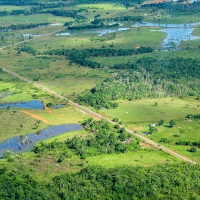
Amazon Near Climate Tipping Point
View the page for this story
New research confirms that the damaged Amazon rainforest is now a net contributor to climate change overall. Kristofer Covey, a biogeochemist and assistant professor at Skidmore College, published research in early 2021 that came to a similar alarming conclusion. He joins host Jenni Doering to talk about this research and how parts of the Amazon are already showing signs of nearing a “tipping point” when the region is no longer able to function as a rainforest and converts into a savanna. (07:19)
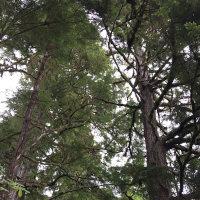
Beyond the Headlines
View the page for this story
After President Trump removed the roadless rule and other protections for the Tongass National Forest, America’s largest national forest, the Biden administration is set to bring them back, Peter Dykstra of Environmental Health News tells host Bobby Bascomb in this week’s Beyond the Headlines segment. They also talk about Maine becoming the first U.S. state to pass a law requiring packaging manufacturers rather than taxpayers to cover the costs of recycling. For the history segment they go back to the year 1931 when a swarm of grasshoppers overwhelmed farmers who were already struck by the Dust Bowl. (04:41)
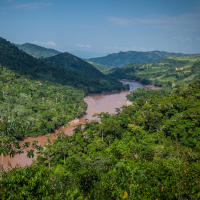
Indigenous Guardians of the Amazon
View the page for this story
Much of the Peruvian Amazon is under threat of deforestation with up to five percent of indigenous communities’ forest land lost to illegal logging and mining each year. Now an organization is equipping indigenous communities with satellite-based data and empowering them with training to take a stand against illegal logging. Jacob Kopas led research examining the effectiveness of this technique at stopping deforestation and joins host Bobby Bascomb to talk about how it works. (07:33)
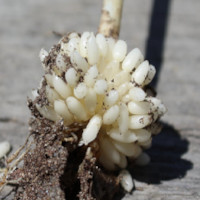
First Nations Forest Gardens
View the page for this story
The Pacific Northwest is known for its lush green conifers, but deep in special pockets of the forest, deciduous and fruit-bearing trees and plants create a mosaic of rich biodiversity. These “forest gardens”, cultivated by First Nations people for millennia, provide a wide array of foods and unique ecosystem functions. Dr. Chelsey Geralda Armstrong, an Assistant Professor of Indigenous Studies at Simon Fraser University, joins host Bobby Bascomb to discuss her work studying the historical ecology of forest gardens with communities in the Ts’msyen and Coast Salish territories of Northwestern British Columbia. (10:38)
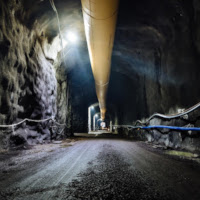
Deep Time Reckoning: How Future Thinking Can Help Earth Now
View the page for this story
Many of us think in short timescales such as project due Tuesday, a friend’s wedding next month. Rarely do we think about deep time, that is time on a geologic scale. Vincent Ialenti’s book “Deep Time Reckoning” features anthropological fieldwork among people who use deep time frameworks every day: safety experts in Finland working on how to prudently store nuclear power waste, which can be radioactive for millions of years. Ialenti joins host Jenni Doering to discuss the challenges of envisioning scenarios that might happen thousands of years in the future, as well as the benefits of thinking in deep time. (17:13)
Show Credits and Funders
Show Transcript
210723 Transcript
HOSTS: Bobby Bascomb, Jenni Doering
GUESTS: Chelsey Armstrong, Kristofer Covey, Jacob Kopas, Vincent Ialenti
REPORTERS: Peter Dykstra
[THEME]
CURWOOD: From PRX – this is Living On Earth.
[THEME]
DOERING: I’m Jenni Doering
BASCOMB: And I’m Bobby Bascomb
The Amazon is showing signs of reaching a tipping point, moving from rainforest to savannah and adding to climate disruption.
COVEY: What we're seeing is actually sections of the Amazon rainforest are actually pumping carbon out into the atmosphere as opposed to taking it up and that the net balance now looks like about 1/3 of a billion metric tons of carbon emitted into the atmosphere every year.
DOERING: Also, First Nations peoples in British Columbia created forest gardens that are still biodiversity hotspots today.
ARMSTRONG: We always talk about human land use as being a negative thing, but this is a prime example of where land use over time actually is a good thing for all these critters and animals and things hanging out in the northwest coast.
DOERING: That and more this week on Living on Earth – Stick Around!
[NEWSBREAK MUSIC: Boards Of Canada “Zoetrope” from “In A Beautiful Place Out In The Country” (Warp Records 2000)]
[THEME]
Amazon Near Climate Tipping Point
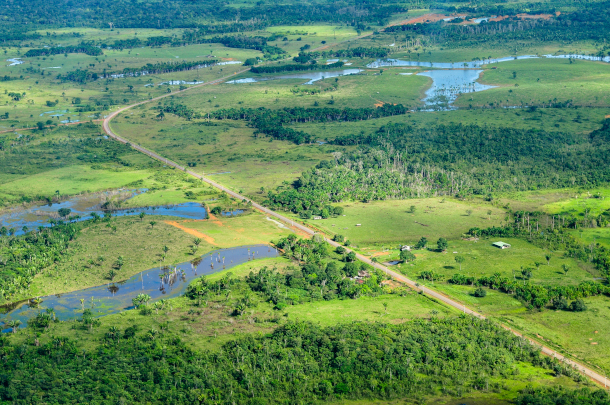
Deforestation of the Amazon rainforest, often for agricultural purposes, reduces rainfall and creates conditions that are conducive for fires and further deforestation. (Photo: Neil Palmer/CIAT, Flickr, CC BY-NC-ND 2.0)
BASCOMB: From PRX and the Jennifer and Ted Stanley Studios at the University of Massachusetts Boston, this is Living on Earth. I’m Bobby Bascomb
DOERING: And I’m Jenni Doering.
The Amazon rainforest is now contributing to global warming, a new study published in Nature confirms. Human activities have so disrupted the rainforest ecosystem that the damaged “lungs of the Earth” are wheezing out more carbon dioxide than they’re taking in. Research published earlier this year had studied several greenhouse gases including CO2 and came to a similar alarming conclusion. Skidmore University professor Kristofer Covey led that research team and he joins us again to discuss the latest research, which he was not involved in. Kris, welcome back to Living on Earth!
COVEY: Hey, thanks so much for having me. It's great to be here.
DOERING: So, Kris, this new study has come out now that takes a look at the atmosphere in four different sub regions of the Amazon over nine years. What's the significance of this study, do you think? And how does it compare to your team's findings?
COVEY: Yeah, well, this study is hugely significant. A tremendous effort over nine years, flying small airplanes over the Amazon, every two weeks for nine years, over four sites to try and look at just the carbon and carbon monoxide. And so this is a way of taking an atmospheric view of what the forest is doing, how is this forest moving CO2 into or out of the atmosphere. And so a hugely important study, massive scientific effort, and new findings about how the forest is interacting with climate. And what they're seeing is not good news, what we're seeing is actually sections of the Amazon rainforest are actually pumping carbon out into the atmosphere as opposed to taking it up. And that the net balance, now, it looks like about a third of a billion metric tons of carbon emitted to the atmosphere every year. This is a huge amount of carbon. Just to put that into perspective, that's roughly the emissions from, roughly from the US coal power industry sector. So this is a very different way, again, of viewing the Amazon rainforest.
DOERING: That's just incredible. I mean, we hear a lot about the Amazon's tipping point, when the region would actually cease to be a rainforest and switch over into a savannah. With all this new research coming out, where would you say that we are in terms of reaching that tipping point?
COVEY: Yeah. So there's a lot of debate about what is exactly the tipping point, do we get there at 40% deforestation from looking at purely models about rainfall and evapotranspiration, and how much of the rain comes through trees? How much has the effect of climate change, and the increase of warming in the region? Does that make that tipping point closer and it's 20%, or it's 25% deforestation? What we can say is that we're at 17% deforestation right now. And that, we won't know that we've crossed the tipping point until we're looking back at the other side of it. And that's going to be a really bad spot to be in. What this newest study can tell us is that we're seeing the kinds of changes in the biophysical system that we would expect to see as we arrive at the tipping point. And so in this southeastern portion of the Amazon, where deforestation rates are in the thirty-percents, right, so the original forest is cut, a third has been lost, what we're starting to see is, again, larger than average warming in that region. We're seeing less rainfall, and we're seeing the dry season extended. And so along with that, the forest of the trees are suffering during the driest season. And so we're seeing tree mortality. And those trees, which are dead then can burn more easily. And so what we're seeing is the setup for a really bad cyclical decline, where the degradation feeds further degradation, which is exactly the concern of the tipping point. And so while we've been looking at this and saying it's going to happen, it's going to happen. Now we have good regional data for a portion of the Amazon that says a lot of the things that we would expect to happen as we approach the tipping point, a lot of those things that we would expect to happen are starting to happen.
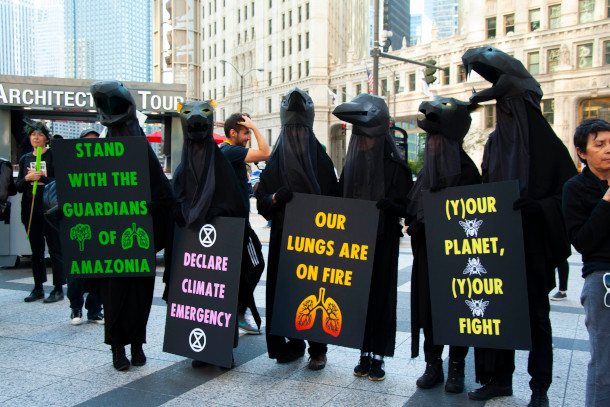
Environmental protesters gather in Chicago to protest the 2019 Amazonian fires. (Photo: Charles Edward Miller, Flickr, CC BY-SA 2.0)
DOERING: So what if anything at this point can be done to prevent the Amazon from reaching this tipping point? And if it does, is there anything that could bring it back at that point?
COVEY: Yeah. So I think there are a couple pieces there. One is to think about how did we get in the situation that we're in, so we're seeing 17% deforestation across the Amazon. 14% of that deforestation has been from agriculture. So food production, and who's eating that food? That's mostly not Brazilians, eating all of that food. That means as a global community, we're quite seriously eating the Amazon. We're a plague of locusts slowly eating the world's largest tropical rainforest. So I think policy issues at the national level for Brazil as the country which owns, which holds the largest portion of the rain forest in national, political matters play a huge role and the Bolsonaro administration has been singularly poor steward of the Amazon. But that's in a larger geopolitical context, whereby who are the consumers of all of these goods, these agricultural products are traveling all over the world. So policy decisions in the US, in the developed world, in the purchasers of these commodities are really important. And I think we tend to look at consumers as being responsible and call for consumer changes. But I think when we're talking about challenges at this scale, we're talking about national and international level policy decisions that are driving that deforestation, enabling that deforestation, incentivizing that deforestation. Those are the changes that need to be made. On that second part of your question about what happens if we do pass the tipping point?
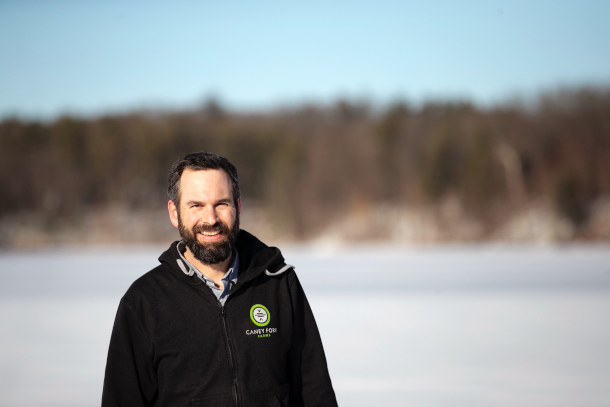
Kristofer Covey is a biogeochemist and Visiting Assistant Professor at Skidmore College. (Photo: Courtesy of Sarah Condon-Meyers)
And can we come back? I think that's an open question. But I think in all likelihood, if we find ourselves on the other side of a tipping point, the change will be rapid and durable, and incredibly difficult to reverse. The situation is that the trees themselves make the rainfall that makes the rain forest. And so every time you cut one more tree, you get a little less rainfall, you cut the next tree, you get a little less rainfall. At a certain point, you get so much less rainfall, that the climate is no longer one that supports a rainforest. And so this is a threat for the rain forest. But I think, again, thinking about the fact that so much of this degradation comes for food production, that we're clearing the forest to grow agricultural products. But at the same time, as we clear more forest, we change climate, and we reduce rainfall. And in the areas where we've reduced the most forest, we're now changing rainfall patterns so much that it actually is inhibiting crop productivity. And so the very thing that we're trying to boost agricultural production is threatened by the ecosystem changes that the loss of forest is bringing.
DOERING: Kris Covey is a biogeochemist and teaches environmental studies and science at Skidmore College. Thank you so much for taking the time with us today.
COVEY: Thanks for having me.
Related links:
- Southeast Amazonia is no longer a carbon sink
- Listen to our previous interview with Kris Covey about damage to the Amazon
- Mongabay | “Brazil’s Amazon is now a Carbon Source, Unprecedented Study Reveals”
- Learn more about Kristofer Covey, Assistant Professor of Environmental Studies and Sciences at Skidmore College
[MUSIC: Roberto 'Robbie' Hacaturyan, “In the Drum! - Recording Brazilian Timbau on a Electronic Beat,” BY Roberto ‘Robbie Hacaturyan, not commercially available]
Beyond the Headlines
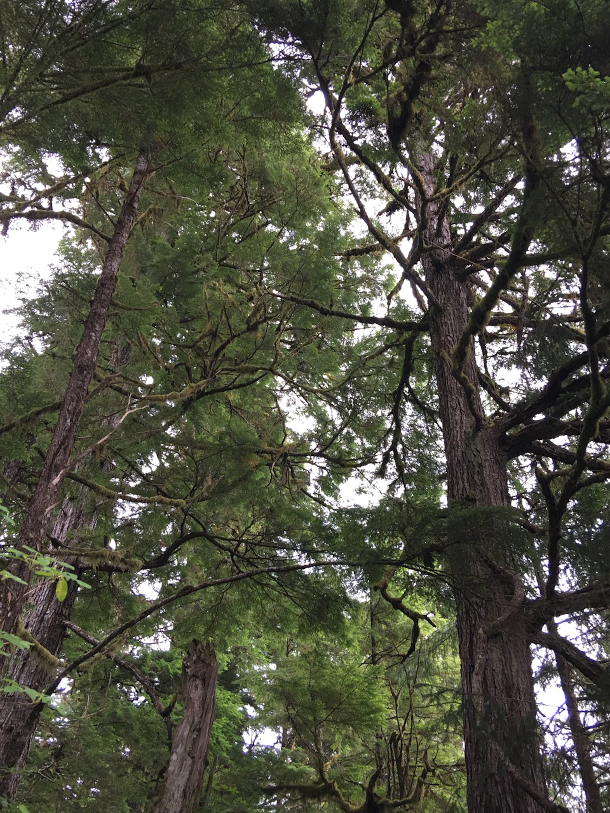
Trees in the Tongass National Forest on Revillagigedo Island near Ketchikan. Tongass is the largest U.S. National Forest at 16.7 million acres, making it a key carbon sequester. (Photo: Steve Curwood)
BASCOMB: Well, it's time for a trip now beyond the headlines with Peter Dykstra. Peter is an editor with environmental health news. That's ehn.org and dailyclimate.org. Hey there, Peter, what do you have for us today?
DYKSTRA: Hi, Bobby. We're going to talk about a political football that is long standing, and over 9 million acres (correction: 16.7 million acres) in size. And of course, we're talking about the Tongass National Forest in the Alaska panhandle. The world's largest old growth temperate rain forest had been largely protected by Bill Clinton's roadless rule. There was a lot of back and forth between starting back with the Reagan administration to Clinton, to Bush to Obama, and then President Trump reversed the roadless rule. If you can't build roads into a forest, you can't cut down the trees and haul them out. And now President Biden in his first months in office is poised to reverse it back to the roadless rule and protect the Tongass.
BASCOMB: Well, that's great news. I mean, the Tongass is absolutely huge. It's the largest national forest in the country in full of just, you know, biodiversity, it's a really unique habitat.
DYKSTRA: Huge and unique. Normally, we don't think of the words temperate and rain forests going in the same place. But it's a wet place that grows a lot and the trees grow big and the species are abundant. All of that was threatened by the revocation of the roadless rule by President Trump. This may restore protections that environmentalists hold dear. But at the same time, there are logging communities in the Alaska panhandle that would be angered by the inability to go back and create jobs in the Tongass.
BASCOMB: Yeah, well, hence the political football that it's been for so long. Well, what else do you have for us this week?
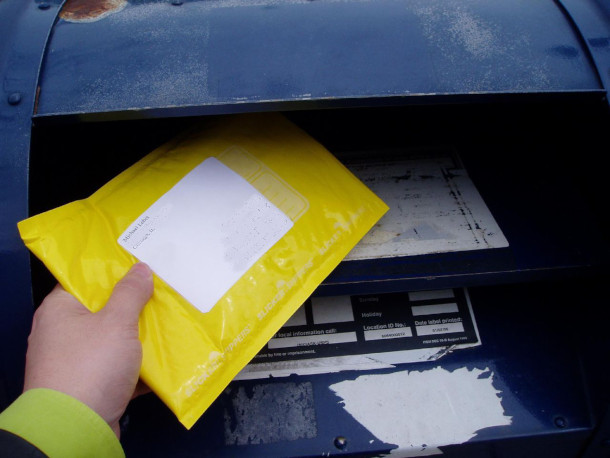
Maine recently passed a law that will shift the recycling costs away from consumers to producers. This legislation comes at a time when according to the US Environmental Protection Agency packaging and recycling accounts for nearly ⅓ of all municipal and solid waste. (Photo: Michael Lehet, Flickr, CC BY ND 2.0)
DYKSTRA: Unprecedented for the US even though it's being tried in a few Canadian provinces and in the EU, Maine becomes the first US state to set up a system to bill companies who produce a lot of packaging, for the disposal and recycling of that packaging. They're doing that through a fund that they hope to create, where these companies would pay in, and municipalities would be subsidized for all the extra spending they have to do for recycling cardboard, plastic and other recyclables.
BASCOMB: Well, that's great, though, I have to wonder where all that plastic recycling is supposed to go? You know, so many Asian countries aren't taking it from the United States anymore. And you know, we don't really have the infrastructure here.
DYKSTRA: Well, it's no secret that plastics recycling has collapsed in recent years. The state of Maine has given itself till the end of 2023. To figure out how all this would work. Plastics recycling is in absolute worldwide turmoil. Cardboard recycling is a little bit easier and it's still succeeding in a lot of places. But Maine is taking the first step in the US to try and manage all of the recycling business that has to take place.
BASCOMB: Well, I'll be curious to see how it works out for them. I wish them luck. What do you have for us from the history books this week?
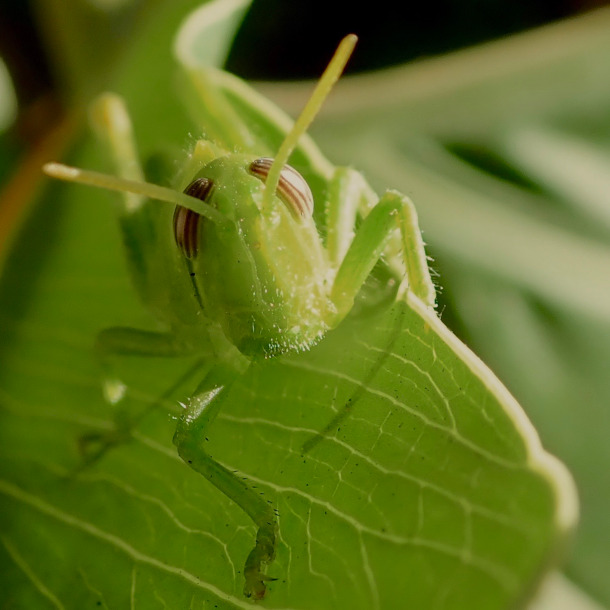
On July of 26, 1931 a swarm of grasshoppers devoured millions of acres of crops in Iowa, Nebraska and South Dakota, states which were already suffering from the Dust Bowl. (Photo: Your, Flickr, CC BY 2.0)
DYKSTRA: We have a 90th anniversary, July 26, 1931. That was a very dry year, at the beginning of what became known as the Dust Bowl, and the perfect swarm was created. Not perfect storm, perfect swarm: grasshoppers by possibly the billions overwhelmed farmland in Iowa, Nebraska, South Dakota, cornfields were eaten straight down to the stubs. American agriculture was hit hard, not just by their grasshoppers, but by a drought that ended up lasting close to 10 years, the Great Depression, saw dust storms, crop failures, all of which were due in part to that long drought and in part due to just terrible soil conservation practices by American farmers. The farmers have cleaned up their act somewhat. And hopefully we're not reemerging into another huge drought.
BASCOMB: Gosh, yeah, I mean, there is, of course, a terrible drought going on in much of the West. But, you know, let's hope we've learned a thing or two in the last 90 years about you know, how to preserve the soil.
DYKSTRA: Let's hope.
BASCOMB: Indeed. All right, well, thanks Peter. Peter Dykstra is an editor with environmental health news. That's ehn.org and dailyclimate.org. We'll talk to you again real soon.
DYKSTRA: All right, Bobby, thanks a lot. Talk to you soon.
BASCOMB: And there's more on these stories on the Living on Earth website, that's loe.org.
Related links:
- The Washington Post | “Biden Administration Proposes Sweeping Protections for Alaska’s Tongass National Forest”
- The Boston Globe | “Maine Passes Nation’s First Law to Make Big Companies Pay for the Cost of Recycling Their Packaging”
- History | “Grasshoppers Devastate Midwestern Crops”
[MUSIC: Louis Armstrong, “Blues In the South” on Louis Armstrong: Complete 1930-1947 RCA Victor Studio Sessions, by Louis Armstrong, Definitive Records]
DOERING: Coming up – We’ll return to the Amazon with a look at one tool to empower indigenous communities to protect their forests. That’s just ahead on Living on Earth.
ANNOUNCER: Support for Living on Earth comes from Sailors for the Sea and Oceana. Helping boaters race clean, sail green and protect the seas they love. More information at sailors for the sea dot org.
[CUTAWAY MUSIC: Marcus Roberts, “Cherokee” on As Serenity Approaches, by Ray Noble, Novus Records]
Indigenous Guardians of the Amazon
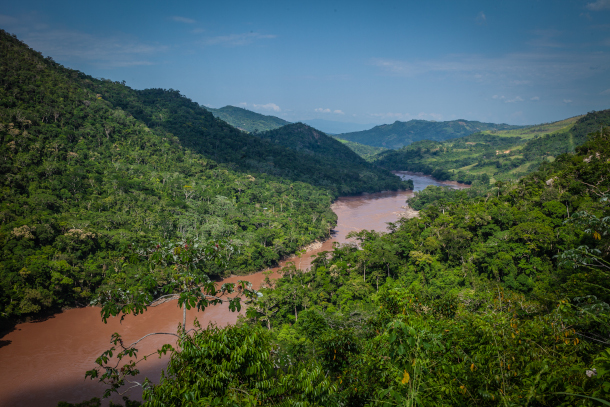
Containing thousands of indigenous plants and animals, the Peruvian Amazon is one of the most biodiverse regions in the world. But with increasing deforestation, much of the flora and fauna in the area is threatened. (Photo by USAID Digital Development, Flickr, CC BY 2.0)
DOERING: It’s Living on Earth, I’m Jenni Doering.
BASCOMB: And I’m Bobby Bascomb
As we heard about before the break, deforestation in the Amazon is driving the world’s largest rainforest towards conversion to savannah. Such a shift would be a disaster for the world’s climate and the water cycle. And of course, the many indigenous groups who make their home in the Amazon would be left homeless. In Peru illegal logging and mining are already claiming up to five percent of forests in some native communities each year. Deep in the Amazon and far from police help, many indigenous communities are on the frontlines of battling deforestation but with little support or useful tools. But a program led by Rainforest Foundation US and the indigenous coalition, ORPIO, is looking to change that. Researchers provided indigenous communities with satellite-based data on deforestation in their territory and empowered them with training to address it. For more I’m joined now by Jacob Kopas, a lead researcher on this study. Jacob, welcome to Living on Earth.
KOPAS: Thank you very much.
BASCOMB: So tell us please about this study that you conducted, what was the technology you employed? And who did you give it to?
KOPAS: So this program was implemented by a collaboration between Rainforests U.S. and ORPIO. And ORPIO is an indigenous federation, that is kind of like an umbrella government for all the community governments in the Peruvian Amazon, this region of the Amazon where we conducted the study. And we studied the impact of this program. And the program was really trying to connect existing satellite technology with folks on the ground, indigenous communities on the ground that are facing deforestation day to day. And so the idea was that there's this great platform that's out there, it's free to use, it has periodic updates using global satellite technology, and that are automatically processed by computer algorithms to see exactly where deforestation might be happening. And then it creates these alerts that then can be used by government, could be used by civil society organizations, or could be used by indigenous communities out in the Amazon. But the problem with this last step is that there is no way for these communities to actually get access to this. So you and I can easily go online and download this information and see the maps ourselves. But many of these communities are deep within Amazon. And so they do not have access to cell phone reception. This program, the main thrust of it, was really to try to bridge this gap and get the information that is already available and freely available to anyone who can access it, and get it out to the frontline folks in the communities that are really facing deforestation.
BASCOMB: And so how did you do that? That seems like a pretty big hurdle.
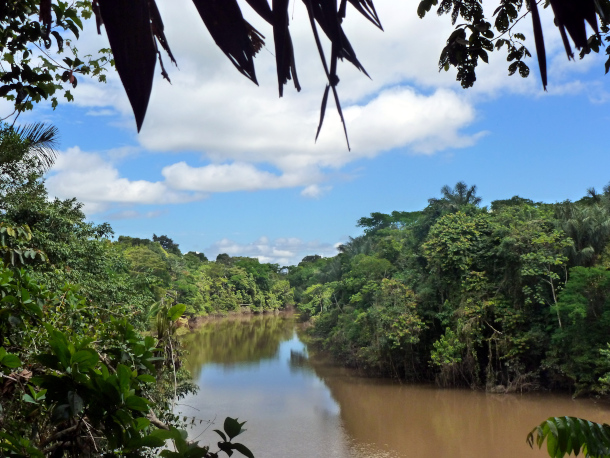
Peru is home to around 5 million indigenous people, representing 55 distinct ethnicities and 48 languages. With over 2 thousand registered indigenous communities, at least 20 live deep in the Peruvian Amazon where they depend directly on the land. (Photo by Global Water Forum, Flickr, CC BY 2.0)
KOPAS: The main cost of the program is providing the satellite imagery, which is already done, it’s freely available. So that part of the program is already there. So the difficult part is getting that information out to the folks in the communities. And so what Rainforest and ORPIO did was they organized a program with communities' consent, they would train a group of monitors, who would then learn how to use the cell phones and learn how to use the GPS technology. And so then, every month, a worker from Rainforest U.S. or from ORPIO, would go up the river and visit communities and deliver USB chips with the updated information from satellite alerts from each community. They would connect them to their smartphones. And then the team would check the smartphones, see where there's possible alerts and then conduct patrols to go out investigate and see what's actually happening.
BASCOMB: Now, of course, the Amazon is just massive. It's, you know, roughly two thirds the size of the continental United States. And in many areas, there just aren't enough law enforcement officials to adequately protect the forest. How can this approach you know, giving remote sensing tools to indigenous people, help with that?
KOPAS: So this is a major problem within the Amazon, and in the area where we implemented this study. And so we think that this program really has an impact, even though the state is largely absent, through two main mechanisms. The first one is by giving the communities more information about what is happening in their collective forest. They're even better to sometimes to police it themselves and make decisions internally. These are for the minor threats. For the major threats such as, for if there is an illegal armed group that's growing coke on their territory, or there's illegal mining or illegal logging, they might require the intervention of state authorities. And so we think using the information, having the the photos, and being able to actually show this information to state law enforcement officials will also have a beneficial impact in terms of providing them the evidence and helping encourage state law enforcement officials to actually come out to the communities and to conduct investigations and to conduct police operations.
BASCOMB: Well, what were your results? What did you see in the study?
KOPAS: The results of the study were interesting. And we found that in the first year of the program, deforestation was reduced by about 50% in the treatment communities as compared to the control communities. And so on average per community, the program was saving about 8.4 hectares of rain forest. In the second year, this effect waned a little bit, and it was only 3.3 hectares saved in the treatment versus the control. We don't know exactly why the project waned in the second year, but we had some information from Rainforest and ORPIO that it might be due to a large drug enforcement operation that was conducted in the second year. And that impacted a large area of the study population. But again, we need to do more study, and we need to actually continue to study this program as they continue to roll it out.
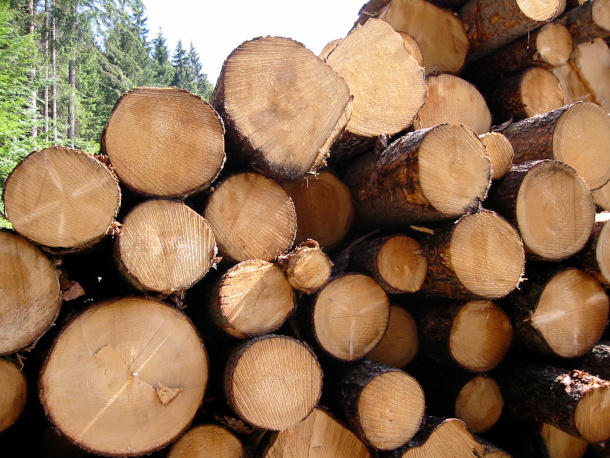
To help fight illegal logging in their forest lands, indigenous communities in the Peruvian Amazon were equipped with GPS technology, allowing them to receive updates and satellite imagery of activities happening on their land. By empowering these communities with the tools needed to help fight deforestation in the frontlines, the indigenous peoples have been able to better monitor and protect their forests. (Photo by David Pursehouse, Flickr, CC BY 2.0)
BASCOMB: Yeah, you know, if you, and I'm sure you have, if you look at a map of, you know, rain forest, and then you overlay that with a map of indigenous territories, I mean, they overlay perfectly where you have intact rain forest, you have indigenous people living there, and it's not a coincidence. So it seems like a no brainer, in a sense, to work with them, you know, empower them with these types of tools to protect the forest that is their home,
KOPAS: I absolutely agree. And I would add there is also a environmental justice component, an equity component here because these are the folks that have been living in the rain forests, have been taking good care of it for millennia. And so there is really a strong argument that investing in funds to try to prevent climate change, and try to mitigate the impacts of climate change and preserve the main tropical forests that we have, that it would be a good place to start in the territory of these indigenous communities who depend on the forest, and live in the forest and have been managing the forest for many years and to help them face these new threats that they hadn't had to deal with 100 years ago, 200 years ago.
BASCOMB: That's a great point. Well, what's next for you with this work? Could this same methodology be employed in say, the Congo, the world's second largest rain forest or other parts of the Amazon?
KOPAS: One of the exciting things about this project in the study is that we have conclusively proven that doing a randomized control trial to measure the impact of these programs, even in far out places such as the Peruvian Amazon is possible. And we can successfully do it to really do rigorous testing of these policies and do them as we roll them out. And so this study was actually a part of a collection of six studies that we conducted in different countries: Brazil and Costa Rica, in Uganda, Liberia, and China. We combined the results of all the studies to give us information on whether community monitoring across different countries in different contexts has a beneficial impact in managing resources. And the ultimate result was actually a very strong yes. All together, these studies really point heavily towards really the need to involve communities directly within financing for preventing climate change, mitigating climate change, and for forest and biodiversity protection.
BASCOMB: Jacob Kopas is an independent researcher with a PhD from Columbia University. Jacob, thank you for taking this time with me today.
KOPAS: Thank you for having me on.
Related links:
- Read more about the study “Satellite-based deforestation alerts with training and incentives for patrolling facilitate community monitoring in the Peruvian Amazon”
- Read the report “Adoption of community monitoring improves common pool resource management across contexts
- Learn more about Rainforest Foundation U.S. and the work they do
- Find out more about ORPIO
[MUSIC: Inkas Wasi, “Cow Bull” on Waqra Fiesta, Toril-Traditional-Peru/arranged Jaime Rodriguez Armas “Mytho”, Fernando Villablanca, Inkas Wasi Productions]
First Nations Forest Gardens
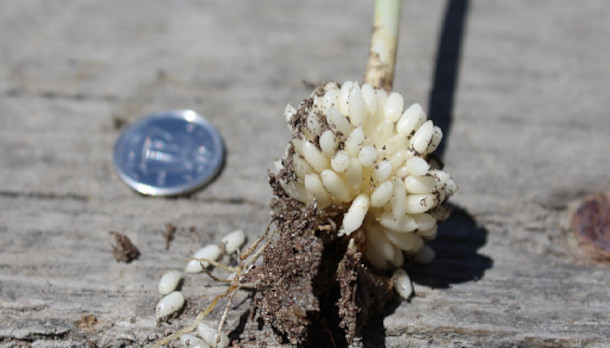
“Wild rice,” also known as the Chocolate Lily (Fritillaria camschatcensis), has an edible bulb full of grain-like rootlets. It’s just one of the many edible and medicinal plants found in the “forest gardens” of the Pacific Northwest (Photo: Chelsey Geralda Armstrong)
BASCOMB: British Columbia is home to lush forests that cover almost two thirds of the Canadian province. And for some ten thousand years, First Nations peoples made the forests their home. The trees provided much of what the people needed to survive and thrive. After asking permission of towering cedars, Coast Salish and other peoples would harvest bark for weaving and wood to carve canoes and totem poles. But they also carved out special gardens in the forest to grow food and medicinal plants. And new research shows that these forest gardens are still home to abundant biodiversity, long after settler colonialism and government assimilation policies separated First Nations people from their homes. Chelsey Armstrong studies these forest gardens as a professor at Simon Fraser University and joins me from a research station near the Alaska panhandle.
ARMSTRONG: We live in the Pacific Northwest where you have very contiguous conifer dominant forests, right? Very, very rich in cedar and spruce and hemlock and firs. And yet these forest gardens stand out like a sore thumb. They're broadleaf forests, which are very rare here. So they're composed of a canopy of things like maple and birch and then sub canopies of hazelnut and crabapple, all deciduous species. One of the big things that kind of sticks out when you're in these places is at the right time of year, it's just like a fruit paradise. There's so many fruits going, kind of around late August, early September. It is an edible forest without question, and also a lot of medicinal species as well in that understory, things like wild ginger, but also root foods, things like wild rice, not the wild rice that you would see in the Great Lakes region, but Fritillaria camschatcensis, it's a lily plant, but it has an edible bulb with lots of little rootlets, which is a really important plant. Very, very different from what you would think when you imagine the iconic Northwest, and very unique in that sense.
BASCOMB: And these were gardens cultivated by the Indigenous people that lived there, how did they create them? It sounds like they must have had to travel quite far to bring these different species together in one spot.

An aerial shot of the Sts’ailes forest garden. These forests demonstrate the way that First Nations people in the Pacific Northwest, like Indigenous communities across the globe, have actively managed natural ecosystems to increase the accessibility and productivity of preferred food plants near their homes (Photo: Chelsey Geralda Armstrong)
ARMSTRONG: Well, so a lot of what we know about how these were created, how they were maintained, we use analogy, and from that I mean, the ethnographic record. So how elders talk about, for example, pruning different crabapple trees, or transplanting things like Saskatoon berry long distances. We don't know exactly how they were started, or when, how old they are, although we are getting closer to some dates. But you can imagine people that were new to an area would start by clearing it of any conifer trees, because again, in the Northwest, they're almost invasive. If you turn your back from a clearing, the conifer saplings will colonize pretty quickly. We know people were burning often, so it is possible that these areas were burned. And then yeah, as you mentioned, bringing certain plants in, we know that there are locally exotic species, so hazelnut, for example. It is a native species to British Columbia, but it's found far outside its range in certain forest gardens. But also, people were managing for succession. These types of forest management practices are basically utilizing and capitalizing on natural ecosystem processes. So things like wild raspberries, black huckleberries, Alaska blueberry, oval leaf blueberry, all these kinds of plants that grow in forest gardens are locally available. And so it's just about letting those things come back, keeping the competitors out, and then enhancing them with new species, like trees and shrubs like Pacific crabapple, or hazelnut, which we know were transplanted quite long distances.
BASCOMB: And how does the biodiversity and productivity of these forest gardens compare to the biodiversity that you'd expect to find in the conifer forest that surrounds them?
ARMSTRONG: Yeah, so our research looked at using a series of botanical inventories and comparing forest gardens with the surrounding conifer forests, or what we refer to as peripheral forest. It was very clear that overall, forest gardens are much more rich. You can count a lot more species, and they're represented evenly. And so we know that forest gardens are a lot more biodiverse. But capturing the nuance of diversity is really important too, when we look at biodiversity. And so it's not to say that forest gardens are necessarily better than conifer forests because they're more diverse. But when you break down the diversity by life form, we get a nice picture. So for example, tree diversity, more diverse in the conifer or periphery forests. When you look at shrub diversity, or herb diversity, there are more species and more diverse representation of those species in the forest gardens. And so you can imagine that, in fact, the edge between these two ecosystems are incredibly productive areas.

Indigenous gardens in the Pacific Northwest have been “managed for succession,” which means gardeners have actively cultivated naturally occurring species like these oval leaf blueberries (Vaccinium ovalifolium) by keeping competitors out. (Photo: Dendroica cerulea, Flickr, CC BY-NC-SA 2.0)
BASCOMB: Well, that totally makes sense. I mean, you would expect more biodiversity in an area with, say, maybe a field, next to a forest, with a river running through it. If you have several different ecosystems all in one spot, you would expect to find a lot of different plants and animals in that one spot as opposed to more, you know, a homogenous ecosystem.
ARMSTRONG: That's exactly right. And these forest gardens do provide this kind of patchwork mosaic that we see, again, breaking through that conifer dominant landscape. And so they are providing all sorts of different functions that you're talking about. And that was the second part of our study, was looking at, okay, we know that these gardens, these forest gardens are more rich, but what does that actually mean? And so ecologists look at something called functional diversity, and we use, or functional traits, to see okay, what are these ecosystem functions or what are the services that these forest gardens are providing? And what we found was that, as you say, these were great places for animals and pollinators. And we found that forest gardens have a higher frequency of animal dispersed and animal pollinated species. So what this means is that forest gardens are the result of animal movement. And of course, humans are included in that category. But on top of that, what this suggests is that after humans left these gardens and villages, in some cases a couple hundred years ago, forest gardens began providing really unique habitat for animals and pollinators seeking food. So what we see here is an example of human land use that actually provides and increases functions across the landscape, rather than depleting it. We always talk about human land use as being a negative thing, but this is a prime example of where land use over time actually is a good thing for all these critters and animals and things hanging out in the Northwest coast.
BASCOMB: Wow, it's just fascinating. Chelsey, can you tell me about the First Nations people that lived in this area and created these gardens?
ARMSTRONG: Yeah, so forest gardens spans pretty large area in the Pacific Northwest, but where we worked mostly, is in Ts’msyen territory in northwestern BC. And specifically, I worked with two communities, Kitsumkalum, and Kitselas. And, you know, the archaeological record of people living in this area is very, very rich, people have been here for, you know, 10,000 plus years. And for Kitselas, we know that they've been, a lot of families have been in the same canyon area for at least 7000 years, these are some of their hereditary names of ranked chiefs are some of the longest held titles in the world. So people have been here for a long time. And these forest gardens were probably managed for millennia, but as far as settler colonialism interrupting and, you know, violently suppressing a lot of these practices, that started around the mid 1800s. And so people were forcibly removed from their communities. A lot of times they moved to the coast to work in canneries, which were, you know, kind of slave-like conditions for people. But they returned, a lot of them, to their communities in the 50s and 60s. And so we see this kind of return of people to the forest garden areas. And as I said, they know about these places, we're catching up to it. One example, there's elders in Kitselas that always say, "old villages are really good places to hunt," right, kind of reifying what we know about the functional diversity of the area being great for animal habitat. But basically, these places have not been maintained for, you know, 200 years, but they're starting to again, and that's a huge part of our research is actually employing different management strategies, clearing the forest garden areas and getting them back to a place where they can be producing lots of food for people locally.
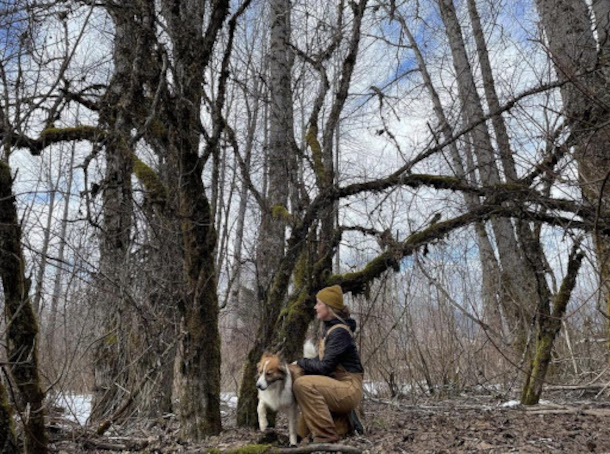
Dr. Chelsey Geralda Armstrong is an Assistant Professor of Indigenous Studies at Simon Fraser University. Her lab studies historical human-landscape interactions and their lasting impacts in the present day. Their current work is centered around the historical ecology of the global north and the traditional resource and environmental management of inhabited landscapes. (Photo: Courtesy of Chelsey Geralda Armstrong)
BASCOMB: And what did you learn about these forest gardens from the First Nation elders that you spoke with?
ARMSTRONG: Oh, I mean, everything. I began my research actually looking at the historical ecology and ethnobotany of hazelnut. And I was brought north by a colleague who said, Oh, we have lots of hazelnut at this archaeological site. And when I got there, it became very apparent that hazelnut was part of a larger modified ecosystem, these forest gardens. And the elders had pointed me in that direction, saying, well, it's not just hazelnut. It's this, you know, it's Pacific crabapple. It's Saskatoon berries, it's soapberries. And so, you know, they're the ones that were leading a lot of this inquiry. And of course, we know from them all the different ethnobotanical uses of plants. But also, they knew of other areas where this was occurring. So I was working at Dałk Gyilakyaw, which is the ancestral homeland of Kitsumkalum people, and a community member said, Well, if you think this is cool, you should go check out the Kitselas Canyon, the same thing is happening there. And so, go to the Kitselas Canyon, sure enough, it was another village complex with forest gardens. So I mean, really, we're, as researchers, we're using different scientific methods and scientific principles to better understand these places, but in a lot of ways, a lot of communities already know about these places. And so we're just enhancing those studies with our own ideologies. And a lot of our research is kind of being led by them and the questions that they have about these places that we can answer.
BASCOMB: Chelsey Armstrong directs the Historical and Ethnoecological Research, or HER, Lab at Simon Fraser University. Chelsey, thank you so much for joining me today.
ARMSTRONG: Yeah, it was such a pleasure. Thanks so much for having me.
Related links:
- Learn more about Dr. Chelsey Geralda Armstrong
- Read the team’s recent publication: Historical Indigenous Land-Use Explains Plant Functional Trait Diversity
- Popular Science |" 'Forest Gardens’ Planted by Canada’s Indigenous People Before the 1800s Still Benefit Ecosystems Today”
- National Geographic |”'Forest Gardens’ Show How Native Land Stewardship Can Outdo Nature”
- Science | “Pacific Northwest’s ‘Forest Gardens’ Were Deliberately Planted by Indigenous People”
[MUSIC: Jerry Alfred & The Medicine Beat, “MacMillan River Love Song” on Etsi Shon Grandfather Song, by Jerry Alfred & The Medicine Beat, Red House Records]
DOERING: Coming up – Finding ways to communicate with the people who will live thousands of years after us. That’s just ahead on Living on Earth.
ANNOUNCER: Funding for Living on Earth comes from you, our listeners, and United Technologies, combining passion for science with engineering to create solutions designed for sustainability in aerospace, building industries, and food refrigeration.
[CUTAWAY MUSIC: Keola Beamer, “Hula Lady” on Wooden Boat, by Carlos Andrade and Vinnie Bryant, Dancing Cat Records]
Deep Time Reckoning: How Future Thinking Can Help Earth Now

This nuclear repository on the tiny island of Olkiluoto in Finland holds nuclear waste 400 to 450 meters underground. (Photo: Posiva)
BASCOMB: It’s Living on Earth, I’m Bobby Bascomb.
DOERING: And I’m Jenni Doering.
Many of us are used to thinking and living in the now, constantly checking our phones for new emails and texts, making plans for the weekend or stressing over a deadline next week. But the author of the book “Deep Time Reckoning: How Future Thinking Can Help Earth Now” is on a mission to get us to think far beyond. Author Vincent Ialenti profiles “Safety Case” researchers in Finland working on how to safely store nuclear power waste, which can be radioactive for millions of years. That team is envisioning how geology, ecology, society and more could affect an underground nuclear waste repository many millennia in the future. Vincent is an anthropologist who teaches at George Washington University and joins us now. Welcome to Living on Earth!
IALENTI: Great to be here.
DOERING: So first, tell me about this nuclear waste repository in Finland. It's the first in the world, I understand.
IALENTI: That's correct. And people didn't necessarily think it would be. Originally, in the early 1980s when Finland set the schedules for building the repository, it was thought that the United States would come before them, that Canada would be before them, that Sweden might go before them, especially because Sweden made the designs for the repository that's currently being implemented in Finland, they did most of the R&D work. But say whatever you want about Finnish punctuality, it's a, it's widely seen as a very punctual culture, they are the ones who actually kept to the schedule that they set in the early 1980s. And were the first in the world in 2015, to get a construction license for building the world's first spent nuclear fuel repository. Well, what's that? It's 400 to 450 meters underground on a tiny island called Olkiluoto. So they take the nuclear waste from these commercial nuclear power plants, they bring them to an encapsulation plant that they're currently building right now, on site at the Olkiluoto repository. They put them into these big, sort of cast iron insert pieces, and then they take those and put them inside a large copper canister. And then they bring it down 450 meters down here, and they put it in this deposition hole, and they surround it with clay. And that's supposed to absorb the groundwater. And when it does, it expands and it snugly places that nuclear waste underground, hopefully for a very long time, perpetuity. That's the dream.
DOERING: And when you say for a very long time, for hundreds of thousands, millions of years!
IALENTI: Yes, and it's fascinating; I mean, you're dealing with, I mean, the famous ones, Plutonium-239, its half life is 24,100 years, Uranium-235, that's the one you usually talk about when you're talking about nuclear reactors, that's 700 million years.
DOERING: 700 million years of a half life?! That's wild.
IALENTI: [LAUGHS] It certainly is, "wild" is a good word for it. It's interesting; so you look at different repository projects across the world, The Yucca Mountain project in the US, which is now defunct, that has a 1 million year compliance horizon, they have to demonstrate safety of the repository for a million years. The Waste Isolation Pilot Plant in New Mexico, where they store basically transuranic waste, so it's like basically trash, low and intermediate level nuclear waste trash from the post-Manhattan Project and Cold War nuclear weapons production complex, basically contaminated lab coats and instruments, and dirt. They have to prove safety in 10,000 years. Finland takes kind of a mixed approach. They try to envision what the world will look like in the far future on a 10,000-year time horizon on the surface, like lakes, rivers, mires sprouting up; shoreline changing; ecosystem changing; populations moving around. But beneath the surface, sometimes it goes up to 250,000 or more years, and then some of the scenarios that they work on to try to prove the safety of this repository site, one of them's a qualitative scenario, kind of a prose scenario that goes a million years into the future.
DOERING: So can you tell us about the Safety Case project that's working on this repository in Finland? What's it trying to do?
IALENTI: Well, the Safety Case is one unit within Posiva, which is the nuclear waste management company that is implementing this repository. And it's owned by Teollisuuden Voima, TVO, and Fortum, which are two nuclear power holding companies in Finland, they're Finnish companies, and they're part of the long term Safety Department. So they're building this large portfolio of evidence to convince the nuclear regulatory authority of Finland, which is called STUK, that this repository will be safe, or at least we can have a reasonable hope that it will be safe, over tens or hundreds of thousands of years.
DOERING: So Vincent, what really fascinated you about this particular group of experts? Why study them?
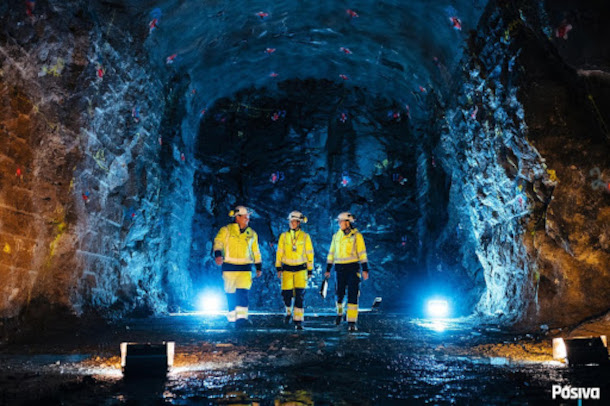
The Safety Case experts working at Finland’s Posiva nuclear waste repository access safety scenarios for a distant future — tens or hundreds of thousands of years away — using a deep time framework. (Photo: Posiva)
IALENTI: Well, deep time is kind of this frame we inhabit as we walk through our lives, but we almost never think about. The Safety Case experts, it's normal. It's a little different for them: it's a pile of PDF files in a folder. It's a file of documents, it's models of how, you know, the next Ice Age, there could be a three kilometer thick, glacial ice sheet on top of the repository, pressing it down, and then when it retreats, there could be seismic activity, and will that disturb the waste? Well, that's the job of the Safety Case expert to figure out. So what's fascinating about this group is, these questions are just routine for them. And they're questions that they answer within the everyday boring office timeframes of "Oh, the project is due Friday," and "we have a meeting on Tuesday," and "oh, I got to bring the kid to the dentist on Wednesday." So seeing deep time folded into these everyday, kind of mundane realms of office life becomes a fascinating anthropological case study in my book, for me to go and then pluck little kernels of long termist wisdom, little threads of thought, and kind of retool them, spin them off into little exercises or thought experiments we could do to help us become more robust and talented deep time thinkers ourselves.
DOERING: Yes, I mean, you kind of give us a warning in your book that thinking about deep time like this, it's challenging, it can be distressing. It's, you know, when I think about this repository that is supposed to keep, you know, this waste safe for hundreds of thousands, millions of years, I start to realize, I'm not gonna be around! You know, I'm an ephemeral being, comparatively. How does it sort of make you feel, grappling with these thoughts?
IALENTI: Ah! Well, I'm an ephemeral being too, it's not a good feeling, necessarily! And, you know, it's interesting; I have a line in my book: "Accept futility; reckon deep time anyway." We're all ephemeral beings, we know that what Finn Posiva's doing is ultimately impossible, it's never going to be a perfect representation of the far future. But this is the closest we're gonna get, I believe, to a robust, highly funded, concerted effort to imagine or envision what the far future will be like. And the anthropologist is a good person to navigate this kind of weird epistemic space between, this is plausible science or this is just a credible forecast or this is just pure speculation, or, some aspects of it are quite convincing; other aspects are not. But what's also interesting is that the Safety Case experts have this humility to them too. Reckoning deep time is partially about hubris, thinking that you're, [LAUGHS] that you can actually think a little about the future, when it could change. But it's also partially about humility, and checking yourself. For example, they had this thing called knowledge quality assessment that they did on some of their models, where they would basically try to bound their assumptions and critique their own models, saying like, here are the gaps we created. So entering in this self reflective, self critical spirit is the first step to being a deep time reckoner.
DOERING; So, Vincent, I'm not a nuclear waste expert, and I doubt most of our listeners are. One of the tools that they use is analogies. Could you give us some examples of those analogies and why they were so important?
IALENTI: Safety Case experts are concerned or have to be concerned about the next Ice Age, because there's gonna be a large glacial ice sheet, most likely, in Finland, possibly three kilometers thick, weighing upon where the repository is going to be. They say, when I was in the field, it was 50 or 60,000 years from now, was where they were reckoning this would happen. You can't really study it in situ, on site, right? You have to go somewhere in the present where there actually is a glacial ice sheet. So what they do is they team up with Sweden, they team up with Canada, and then they go to Kangerlussuaq, Greenland, and they study a present-day glacial ice sheet as an analogue for a far future Finnish ice sheet. They look at how it melts, they look at its permafrost, they look at what happens when it retreats, and they make extrapolations using the power of analogy about how the far future Finnish ice sheet may be. And that's just one example. They look to archaeological artifacts as well, right? So they would look to Swedish warship Kronan, which sunk in the 17th century in a battle of Oland, and cannon fell out, and half of it's in the seabed, and then half of it's corroding a little bit in the seawater. They lifted this thing up, and then studied this bronze cannon from this old shipwreck as an analogue for the far future fate of a copper canister in the nuclear waste repository, the canister they're putting Finland's nuclear waste in. It's taking a present day artifact, learning about its past, in order to make projections about the future.
DOERING: So how can we in our everyday lives do some of this thought experimentation, of thinking long term? And why should we?
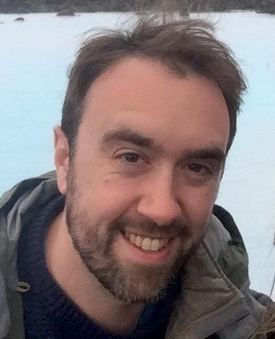
Vincent Ialenti is a MacArthur Postdoctoral Fellow at The University of British Columbia and an Assistant Research Professor at George Washington University. (Photo: MIT Press)
IALENTI: That's the challenge of my book as an anthropologist. Analogies was kind of my way there, these natural analogue studies and archaeological analogue studies. There's nothing arcane or esoteric or highly technical about the power of analogy itself. So I started looking for analogies in my own life, to try to distance myself from the now, and then expand my time consciousness and temporal awareness. For example, when I would, loved hiking around the Appalachian Mountains, I'd go out to Shenandoah and to West Virginia, and you know, western parts of Virginia, these large rolling hills. They're mountains, but they're not, you know, they're not quite the Rockies, they're not as tall. But at some point in geological history, they sure were! I start thinking of the imageries I have of the Alps, or the Himalayas, or taller mountains today, or the Rockies, to try to imagine this area with much taller mountains. That takes my walk, and then enchants it with deep time, or geological time. And it's, it can be meditative. It can be contemplative, and it can be consciousness expanding to do this. And all of this is directly inspired by the spirit of the Finnish nuclear waste experts, analogue Safety Case experts.
DOERING: Wow. We are at this unique, unprecedented time where we can look back so far in the past, thanks to geologists who, you know, tell us what the earth used to look like. And physicists who know how the universe began. And we can also imagine far into the future, thanks to people like the Safety Case project experts in Finland. So Vincent, one of the big challenges with safely storing nuclear waste for a really long time, is how to warn far future generations about it, how to communicate that. I mean, they might not even use the same symbols, let alone language that we do. So how have nuclear experts been approaching this in their work?
IALENTI: Well, it's different in different countries. In the United States, with the Yucca Mountain high level nuclear waste repository project that is now mostly defunct, or stagnated, depending who you ask. And then with the WIPP, the Waste Isolation Pilot Plant, which is transuranic nuclear weapons waste. But both of those projects, WIPP and Yucca, the Department of Energy and Bechtel and their various subcontractors did some pretty outlandish and fascinating inquiries. The question was, how do you build a monument at the site to warn people not to dig there? Well, some ideas were, you put this huge, terrifying monument of thorns, because thorns are scary, everyone knows that thorns are bad, and you put it over the site, black thorns, scare everyone. Other people were like, let's put a huge slab with loads of different languages on it that says, "Do not dig here, this is a dangerous place of terror." But languages don't even last that long, compared to the multi-millennial half lives of nuclear waste, right? Languages change. So that becomes a problem, too. Other people have suggested to establish a quote-unquote, "Atomic Priesthood," where people go out into the desert once a year, and at the site, and recite this sort of oral history mode, "Do not dig here, this is a place, we are the protectors, we have to tell society." Because you know, oral histories last a really long time. One person proposed bioengineering cats, so they change colors when they're in contact with radiation. And then you also release lots of folklore into the area that says, I don't know what it would be, but maybe it's like, "Green cat, stay away, brown cat, you're okay," or something. And everyone knows that when you see that color cat -- So this is just the type of thinking that comes up when you expand your time horizon that long. So, Finland, what's fascinating is, they don't do that! [LAUGHS] They think it's hubris. Not, I don't want to speak for everyone, but the project doesn't do it. Their idea is, bring it to the island of Olkiluoto, and just put it in a place where there's not many resources, where no one will want to dig, and then bury it. And then in 2120, when you're done, cap it off, or whenever you happen to be done, who knows when it'll actually be done, and then forget.
DOERING: Wow, and we'll never know if it works or not, I guess we'll be dead! [LAUGHS]
IALENTI: That's right. That's the spirit!
DOERING: So you also talk in your book about this idea of the "deflation of expertise," really a dangerous thing that's been happening. Could you tell us about what you mean by that?
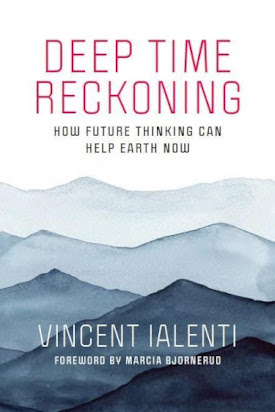
Deep Time Reckoning (MIT Press, 2020) uses anthropological studies of Finland’s nuclear waste repository to discuss strategies for imagining and envisioning potential far future worlds. (Photo: MIT Press)
IALENTI: Sure can. So when I return to the United States, I see mass populist fervor against elites, and there's many reasons for it, and some of them quite understandable. But seeing science being brushed off in this as well, that's kind of what I saw when I came back from Finland, which is a place that has a generalized trust for expertise that you don't see elsewhere. And this can't be detached from the public acceptance of Finland's repository. The entire Finnish nuclear complex was under the Ministry of Employment and Economy, one of the most trusted organizations in the country. Ultimately, the organization that signs off on, can you build a repository, can it accept waste and gives you that permit is the Ministry of Employment and Economy, so trusted. And you didn't see the NIMBY, not-in-my-backyard politicking that you saw with the Yucca Mountain project, and in so many other countries that were supposed to go before Finland, or planned to go before Finland in becoming the world's first nuclear waste repository project. Part of that is the trust culture. Another part of it is Finland had a mature consent-based siting approach. And that means the Finnish nuclear experts respected the public enough to go out to the Olkiluoto community, do a lot of public hearings, listen to what concerns were in the community, in Western Finland. And then literally integrate some of their concerns, technical concerns, even if the scientists brushed them off. They said, "Nope, we're gonna study it anyway." This is in the late '90s and early 2000s. And they listen to the public and then do an environmental impact that directly responds to some of the local anxieties and concerns about the repository. This is a participatory and consent based siting procedure. The crucial part at the end, is the municipality can say no! They can say, "Sorry, you just spent all this money, but we don't want it here." And trusting the locals and the community to say, we don't want it here is so different than what happened in Nevada with the Yucca Mountain project. In that context, the Department of Energy did a decide-announce-defend approach, it was called the "Screw Nevada Bill," in Nevada. They put it in a state with a low amount of electoral votes, it was a place right near Indigenous communities. And it was one of the most nuclear bombed places on earth, it was right near the Nevada Test Site. And since then, here's a reason we shouldn't trust science too much, or trust that science will be responsibly used too much, is that hundreds of nuclear tests have occurred in that site, and the fallout went all across the United States and all across the world, eventually, from nuclear weapons testing out there. Now, there's political resistance in Finland to the new reactor they're buying from Russia. But the actual nuclear waste repository was not really politically charged, and rejected on NIMBY grounds.
DOERING: So Vincent, before you go, to what extent do you think that long termism and thinking in deep time is ultimately connected to our survival as a human species?
IALENTI: It's closely connected to it. We're living in a moment of a global climate crisis. We're living in a moment of dwindling biodiversity. We're living in a moment of rapid short-termism, people focused on 24-hour news cycles, 24/7 news cycles, people waiting for the next tweet, people getting caught up staring at screens. But the consequences we're creating for humanity, be they microplastics, be it nuclear waste, are extremely long term. I am not a hard scientist or a physical scientist, so I don't produce solutions in how to reverse these things. So making deep time or geological time more at the level of your everyday experience, more a rubric or a framework, or a set of strategies or tactics that someone can pick up and then use in their everyday life to distance themselves from the now: that's my project. And I think that's the kind of intellectual and imaginative education we need to achieve for ourselves if we're going to be a population that can steward a planet, at least for a few more generations. And ideally, for many more than that.
DOERING: Vincent Ialenti is the author of Deep Time Reckoning: How Future Thinking Can Help Earth Now, and a research professor at George Washington University. Thank you so much, Vincent.
IALENTI: Yeah, it was great to be here, I really enjoyed the conversation.
Related links:
- More about Deep Time Reckoning
- Learn more about Posiva and Final Disposal
- BBC | “The Benefits of Embracing 'Deep Time' In A Year Like 2020”
[MUSIC: Mason Williams/Deborah Henson-Conant, “Classical Gas,” Hip Harp Live tour. March 7, 2012 at the John G. Shedd Institute for the Arts, Eugene Oregon, by Mason Williams]
BASCOMB: Living on Earth is produced by the World Media Foundation. Our crew includes Naomi Arenberg, Paloma Beltran, Anna Canny, Jay Feinstein, Mark Seth Lender, Don Lyman, Aynsley O’Neill, Jake Rego, Joshua Siracusa, Tivara Tanudjaja and Jolanda Omari.
DOERING: Tom Tiger engineered our show. Alison Lirish Dean composed our themes. You can hear us anytime at L-O-E dot org, Apple Podcasts and Google Podcasts, and like us, please, on our Facebook page - Living on Earth. We tweet from @livingonearth. And find us on Instagram at livingonearthradio. Steve Curwood is our Executive Producer. I’m Jenni Doering
BASCOMB: And I’m Bobby Bascomb, Thanks for listening!
ANNOUNCER: Funding for Living on Earth comes from you, our listeners, and from the University of Massachusetts, Boston, in association with its School for the Environment, developing the next generation of environmental leaders. And from the Grantham Foundation for the protection of the environment, supporting strategic communications and collaboration in solving the world’s most pressing environmental problems.
ANNOUNCER 2: PRX.
Living on Earth wants to hear from you!
Living on Earth
62 Calef Highway, Suite 212
Lee, NH 03861
Telephone: 617-287-4121
E-mail: comments@loe.org
Newsletter [Click here]
Donate to Living on Earth!
Living on Earth is an independent media program and relies entirely on contributions from listeners and institutions supporting public service. Please donate now to preserve an independent environmental voice.
NewsletterLiving on Earth offers a weekly delivery of the show's rundown to your mailbox. Sign up for our newsletter today!
 Sailors For The Sea: Be the change you want to sea.
Sailors For The Sea: Be the change you want to sea.
 The Grantham Foundation for the Protection of the Environment: Committed to protecting and improving the health of the global environment.
The Grantham Foundation for the Protection of the Environment: Committed to protecting and improving the health of the global environment.
 Contribute to Living on Earth and receive, as our gift to you, an archival print of one of Mark Seth Lender's extraordinary wildlife photographs. Follow the link to see Mark's current collection of photographs.
Contribute to Living on Earth and receive, as our gift to you, an archival print of one of Mark Seth Lender's extraordinary wildlife photographs. Follow the link to see Mark's current collection of photographs.
 Buy a signed copy of Mark Seth Lender's book Smeagull the Seagull & support Living on Earth
Buy a signed copy of Mark Seth Lender's book Smeagull the Seagull & support Living on Earth

